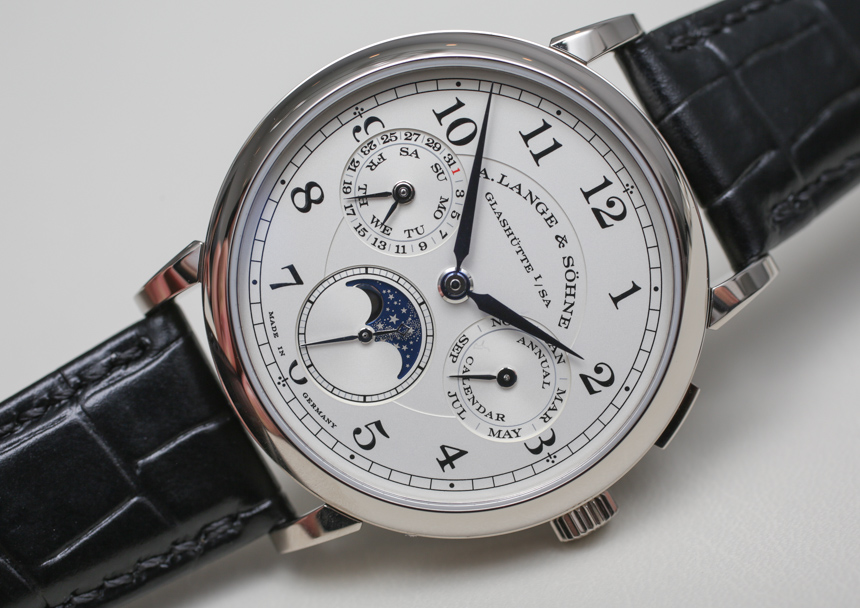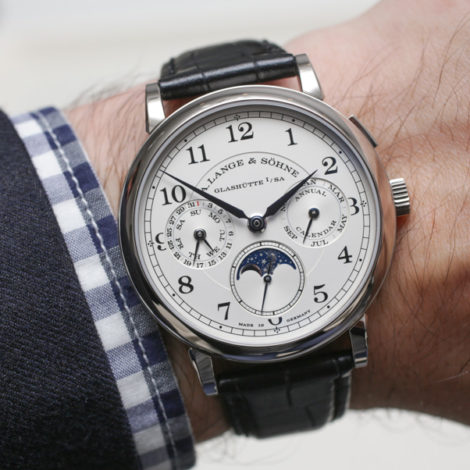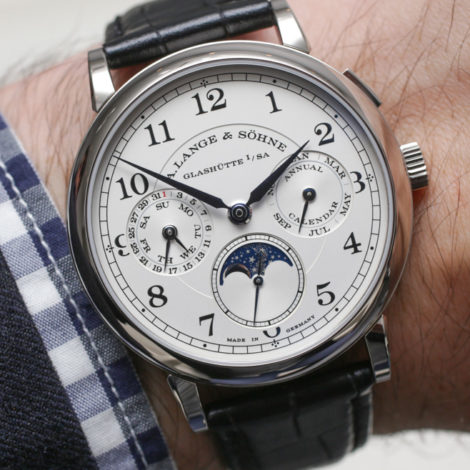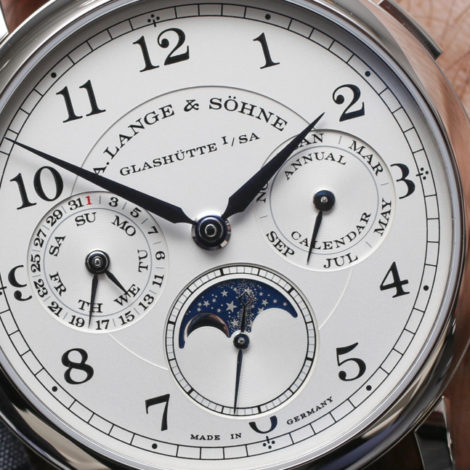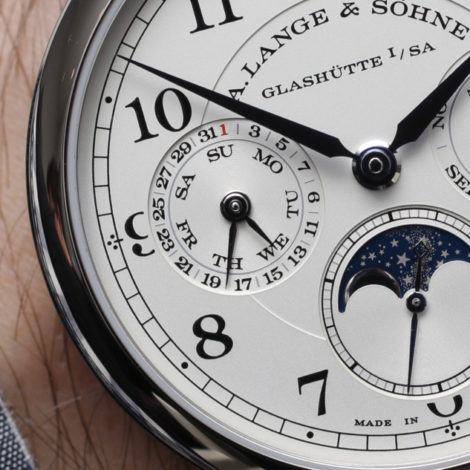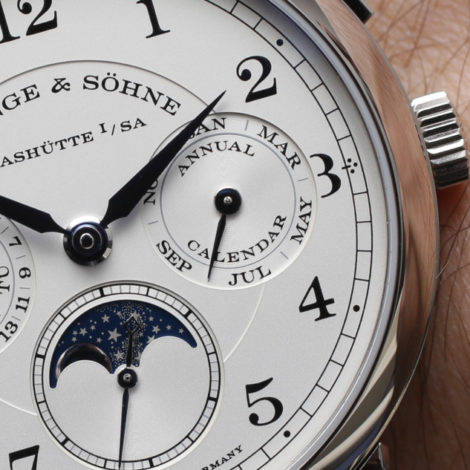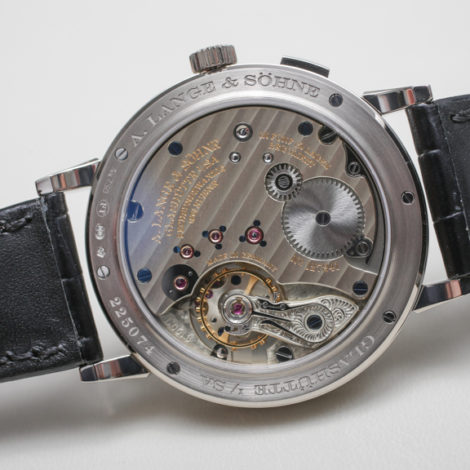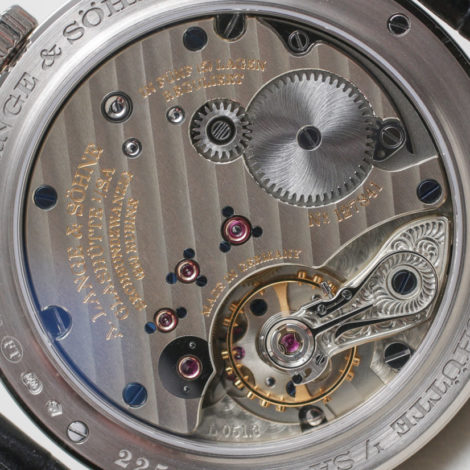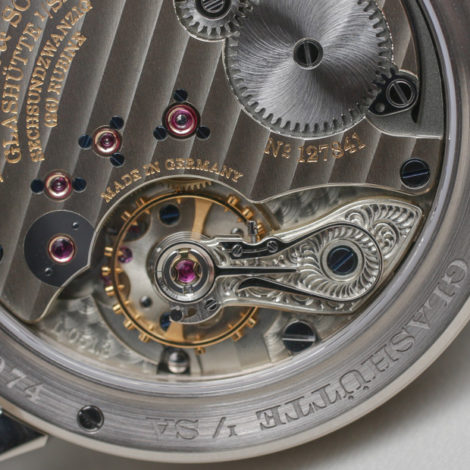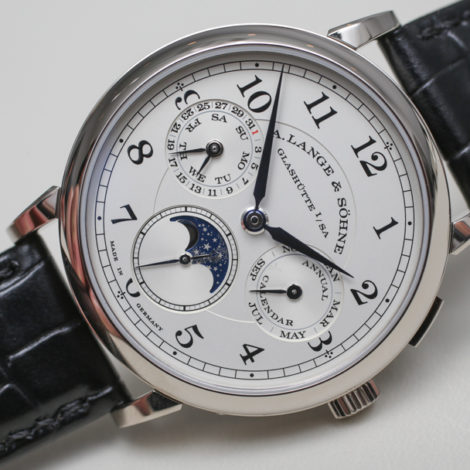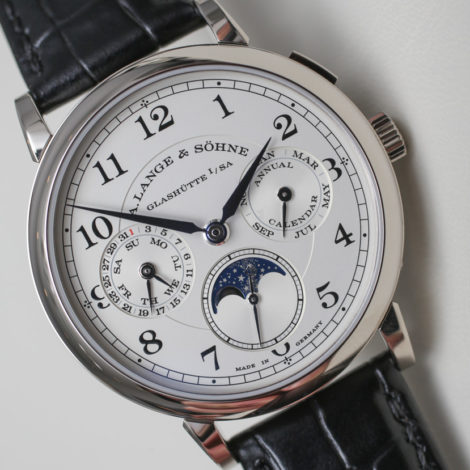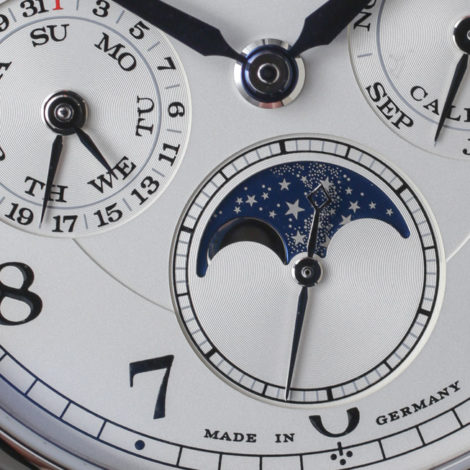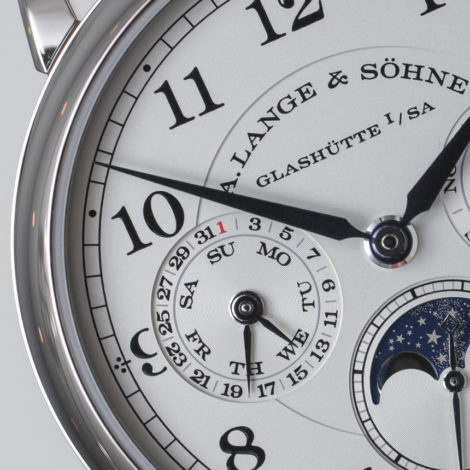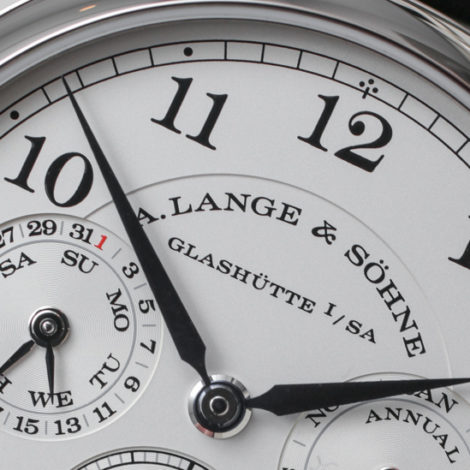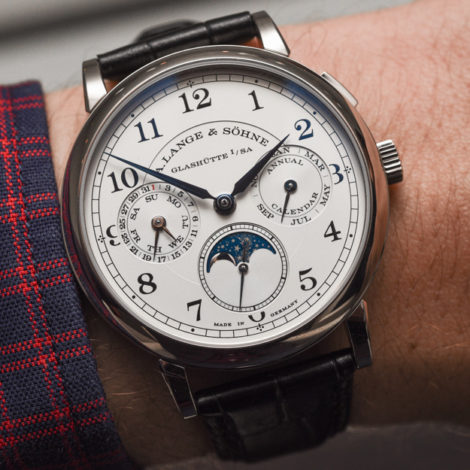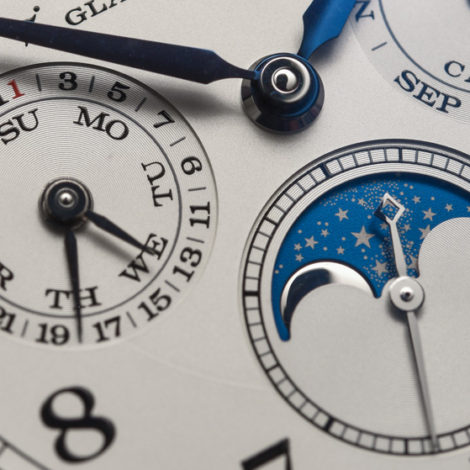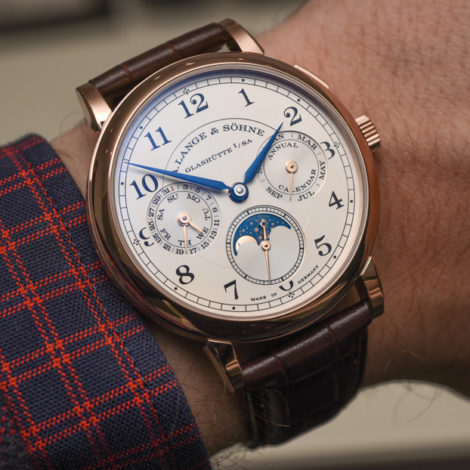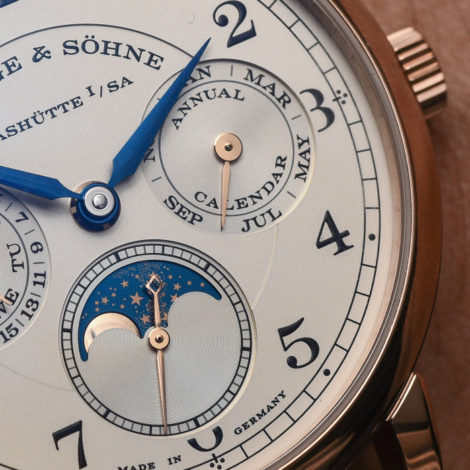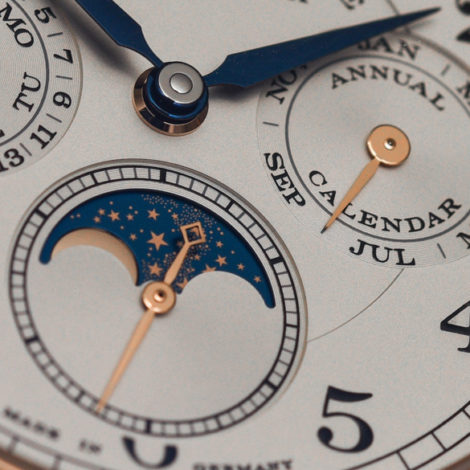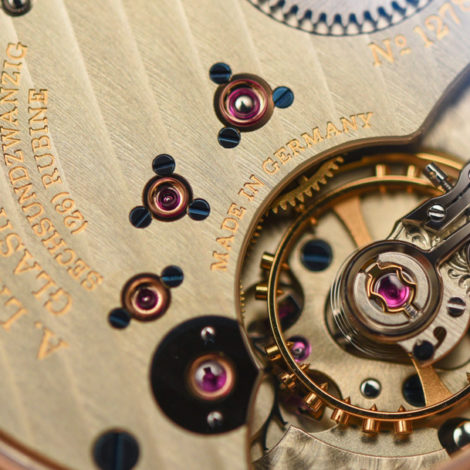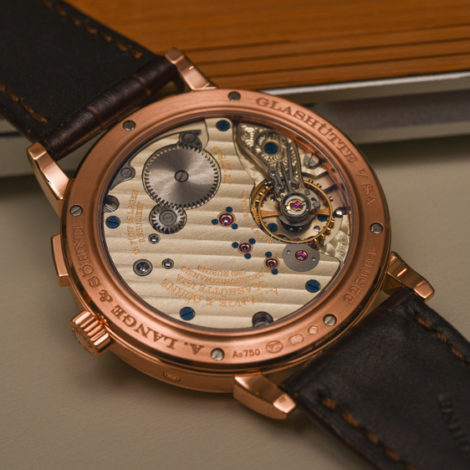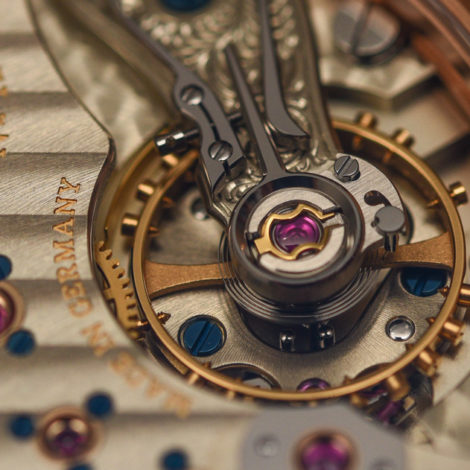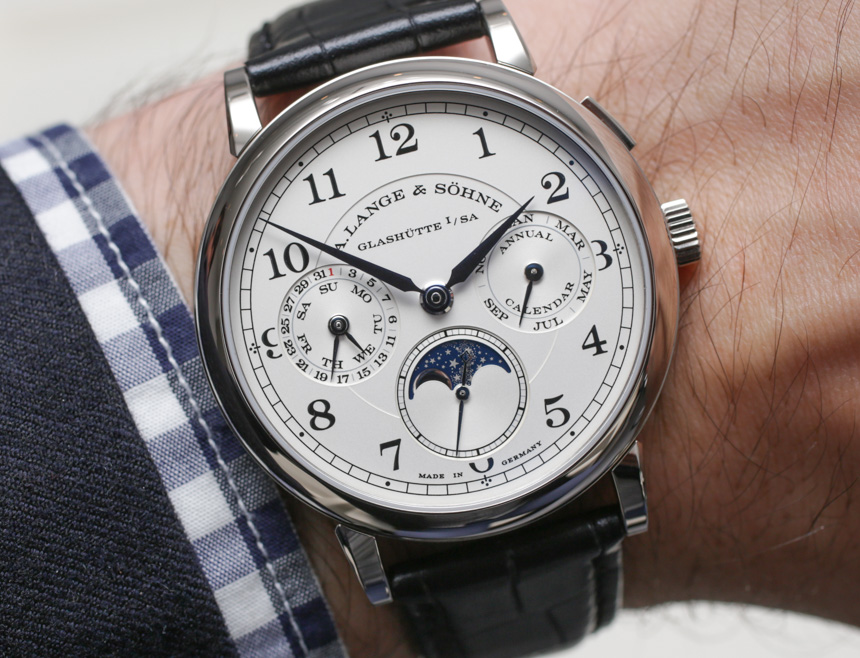
Given the practical, classic look of the A. Lange & Söhne 1815 Annual Calendar, I would hope that owners give this type of timepiece a great volume of wrist time. This beautiful wearable is meant to be worn on a regular basis, so go with one that offers the most utility to peace-of-mind ratio. Is it proper to be so focused on practicality when it comes to a luxury product? The thought process might seem ironic at best. I would disagree. Watches are meant to be worn and admired, as well as cared for. Unless you are the type of watch collector who doesn’t wear their watches and keeps them imprisoned in a safe, you’ll want to maximize your level of enjoyment per watch by wearing something that you need to worry about the least.
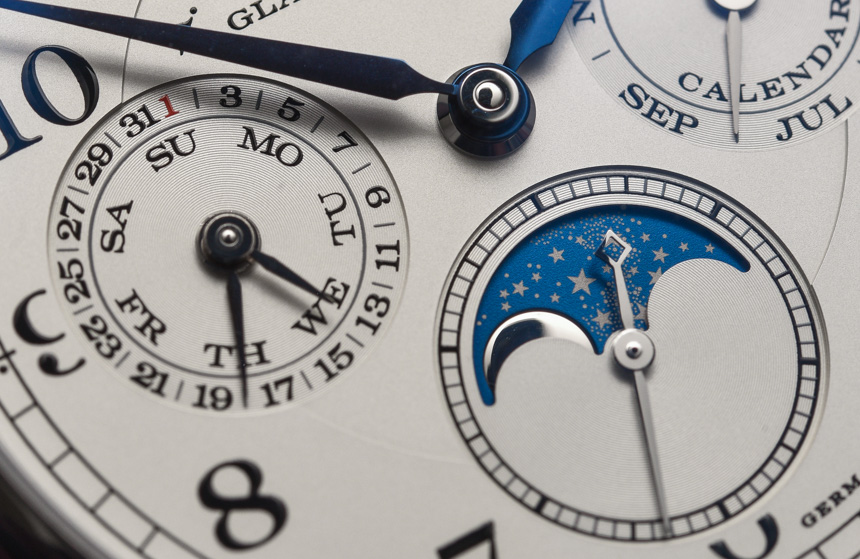
Annual calendars, such as this 2017 A. Lange & Söhne 1815 Annual Calendar (debuted here on aBlogtoWatch), represent one of the most desirable complications in mechanical watches these days. Annual calendars take into account the date and month… and sometimes other information such as the day of the week and moon phase (as is the case here). The idea is simple and still useful today for people who like to wear such watches on a regular basis. Rather than have a “simple date” complication where the movement isn’t able to calculate the different number of days in each month across the year (simple calendars assume each month is 31 days long), annual calendars include the ability for the watch to recognize the difference between 28, 30, and 31 day months.
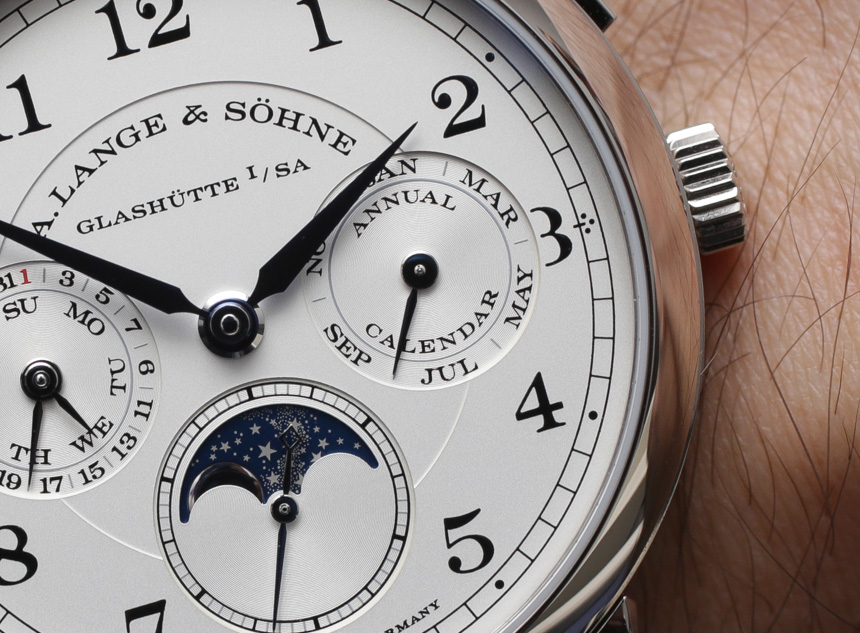

The only time you need to manually adjust the date on an annual calendar is during Februaries when there are 29 days. This is at max a once a year adjustment. Perpetual calendars take this a step up with the included functionality to take into consideration leap years, but in my opinion such “higher level” watches do not frequently justify the increased price of the product. More so, given the reality that a perpetual calendar is more complicated mechanically, the risk of something going wrong likewise increases with a perpetual over an annual calendar movement. My policy is that the watches I own should be less prone to needing service, so I prefer the most simple (albeit cool) watches for regular wear.
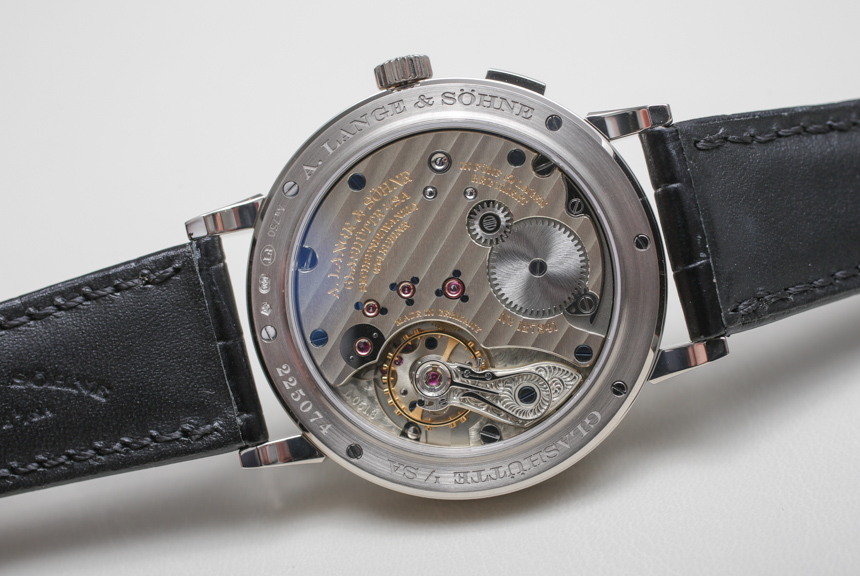
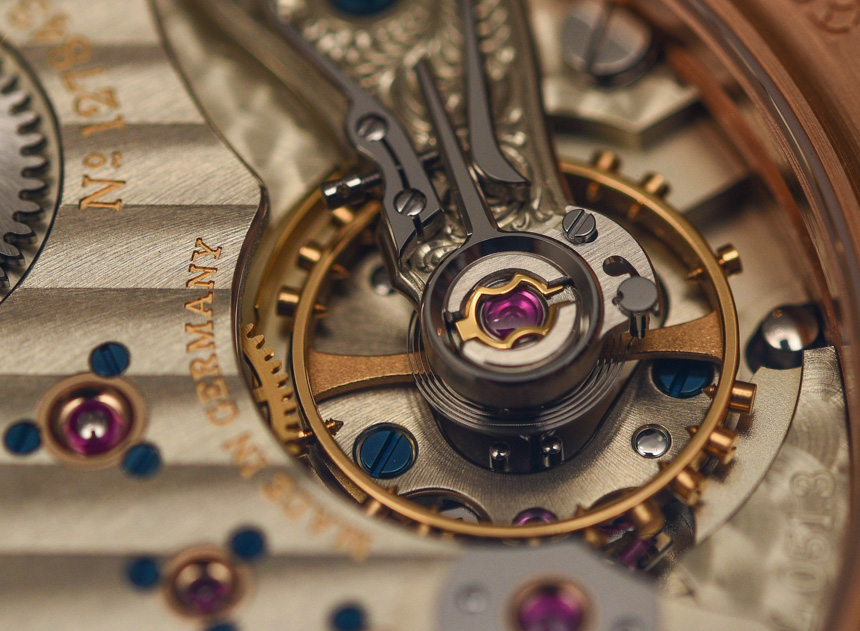
Visit A. Lange & Söhne in Glashutte, Germany and you’ll hear a lot of talk about practicality, utility, and durability. Even though A. Lange & Söhne watches represent the very top of German-made luxury watches, they are German. That means functionality needs to be a top priority above things like aesthetics or perceived status value. A good example is my favorite feature in the in-house made L051.3 manually-wound movement. A pusher on the side of the case is designed to make all the calendar information advance by a single day. That means if you press the button, then the date and day of the week, as well as the moon phase indicator will advance by one day.
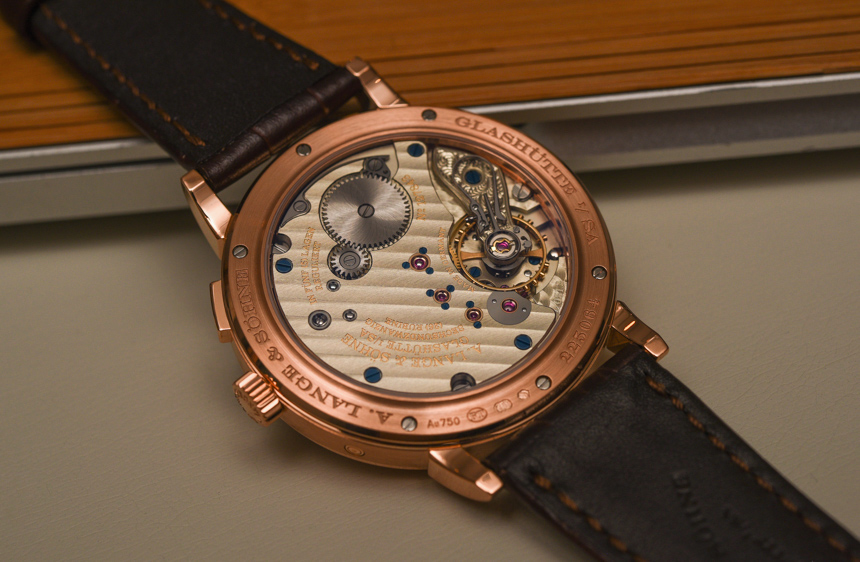

You can already do this by using dedicated in-set pushers on the case designed to allow you to adjust each of the complications individually – so why offer a pusher to do all of them at the same time? Good question. If you’ve ever had a complicated calendar watch, you know the hassle required to set all the information correctly if the watch hasn’t been worn for a while. This situation is especially common with manually wound watches (that can’t be put on automatic watch winders) in collections where owners have multiple watches. That means the likelihood of picking up a watch that isn’t set to the right time and date is likely.
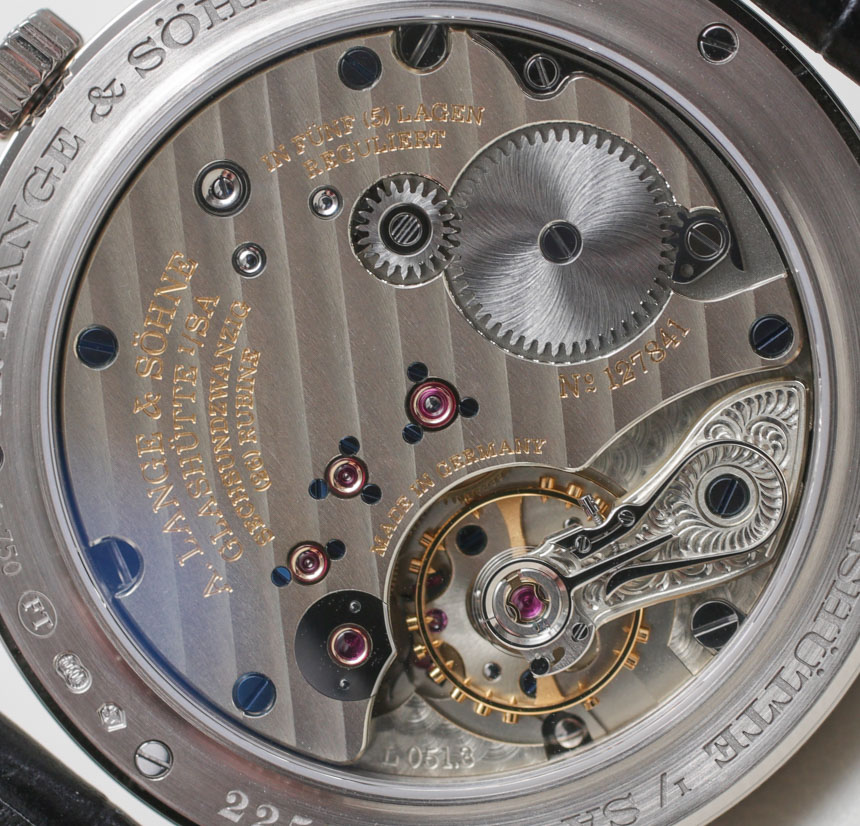
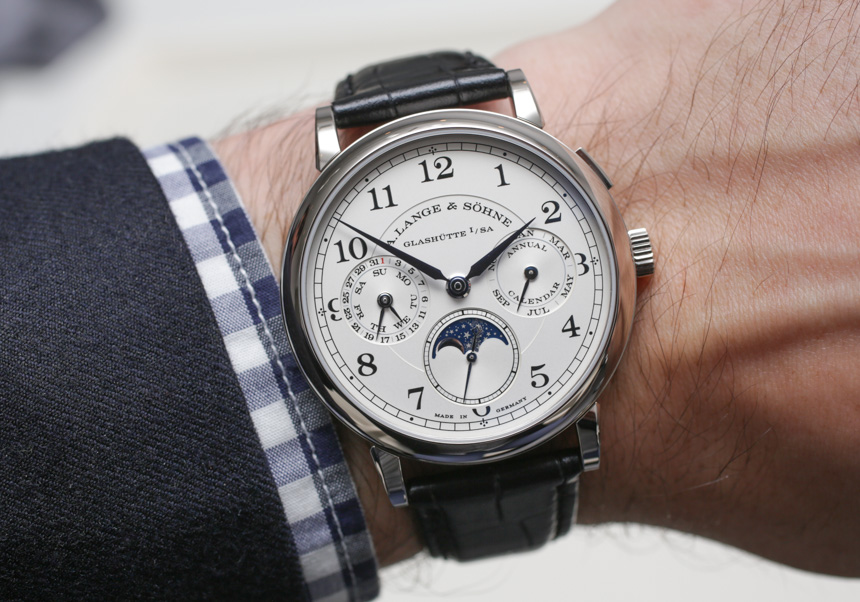
This is where the pusher comes in. With three days of power reserve (72 hours of power reserve operating at 3Hz), the 1815 Annual Calendar is designed to be set on a table over the weekend and still powered on Monday. If, however, you let the mainspring wind down and need to get the movement started again, all you need to do is press the pusher a few times to make up for “lost days.” That way, your watch’s time and calendar information can be accurately set in seconds, without the need to find a stylus, operate the pushers, check the internet for moon phase data, etc…
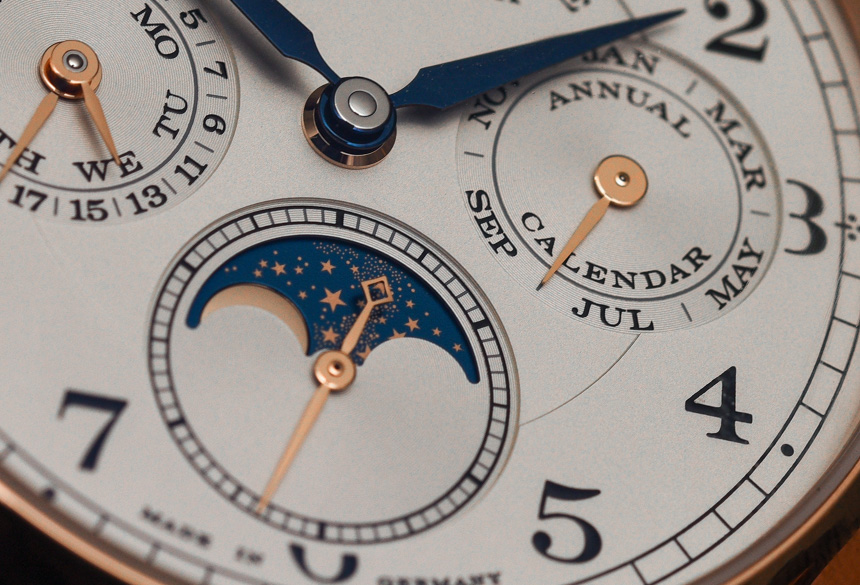
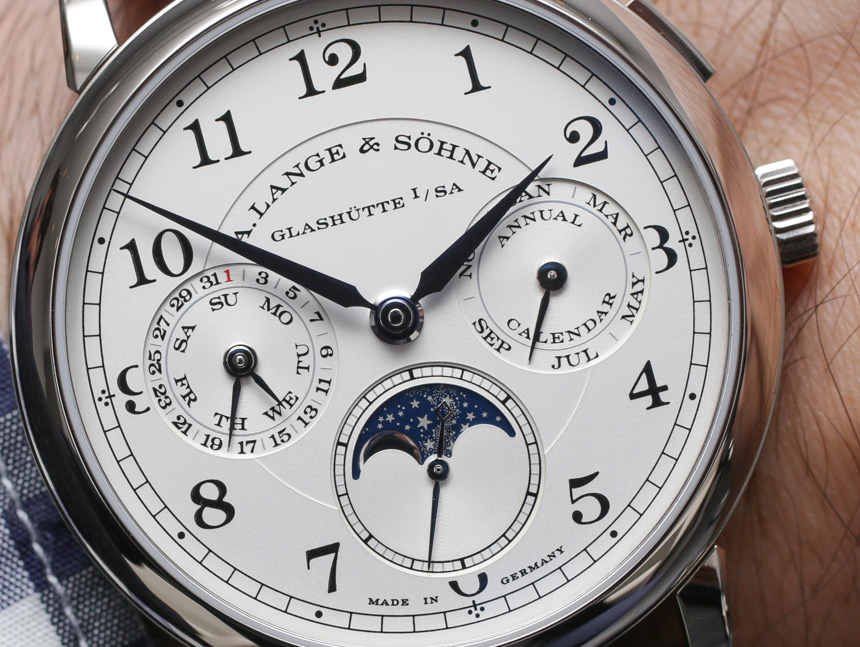
Thus, the entire purpose of the calendar correction pusher positioned at 2 o’clock on the case is purely for convenience. You don’t see too much of that anymore these days in luxury watches – where style is often seen as more important than substance. We like A. Lange & Söhne specifically because the engineers there understand that high-end watch consumers want more than just a status symbol, but a wonderfully operating machine. This same mentality has (in my opinion) helped the German high-end car industry be as successful as it is.
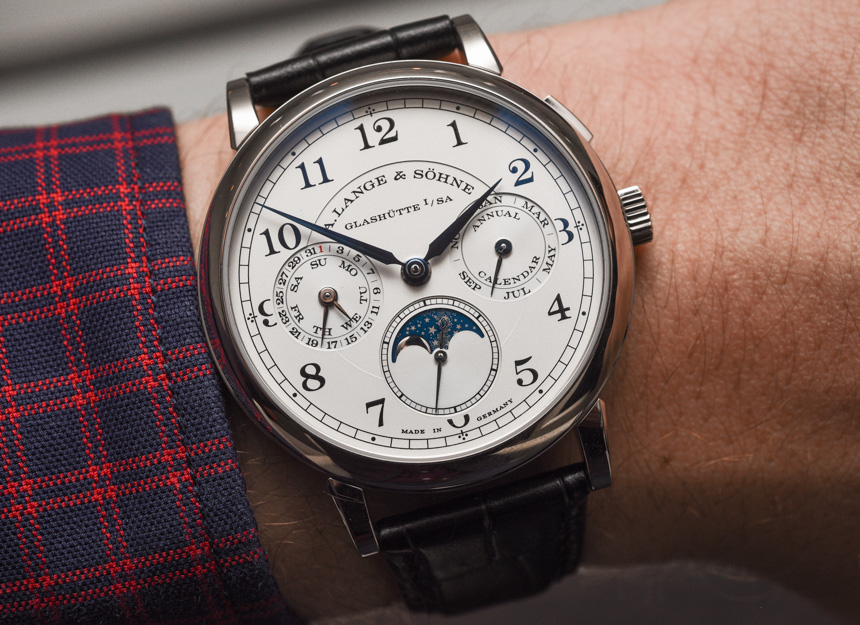
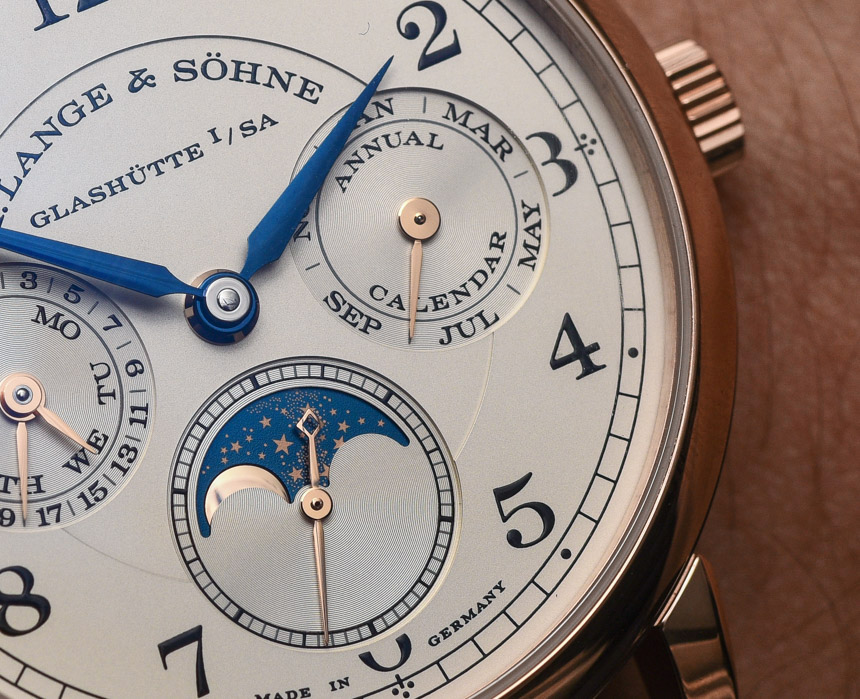
On the wrist the A. Lange & Söhne 1815 Annual Calendar is sensible, sized at 40mm wide and available in 18k white or 18k pink gold. My personal tastes mean that the latter is the sexier of the pair in my opinion, but they are both lovely watches with their symmetrical, easy to read dials. The case is just under 10mm thick, which makes it wear well under sleeves. The dial information is easy to read, and the only controversial design decision by A. Lange & Söhne is to have the sub-dials overlap some of the hour markers. There are some people who are bothered by the overlap. I’m not among them, and prefer this style because it allows the sub-dials to be proportionally larger, and thus make for an overall better looking timepiece.
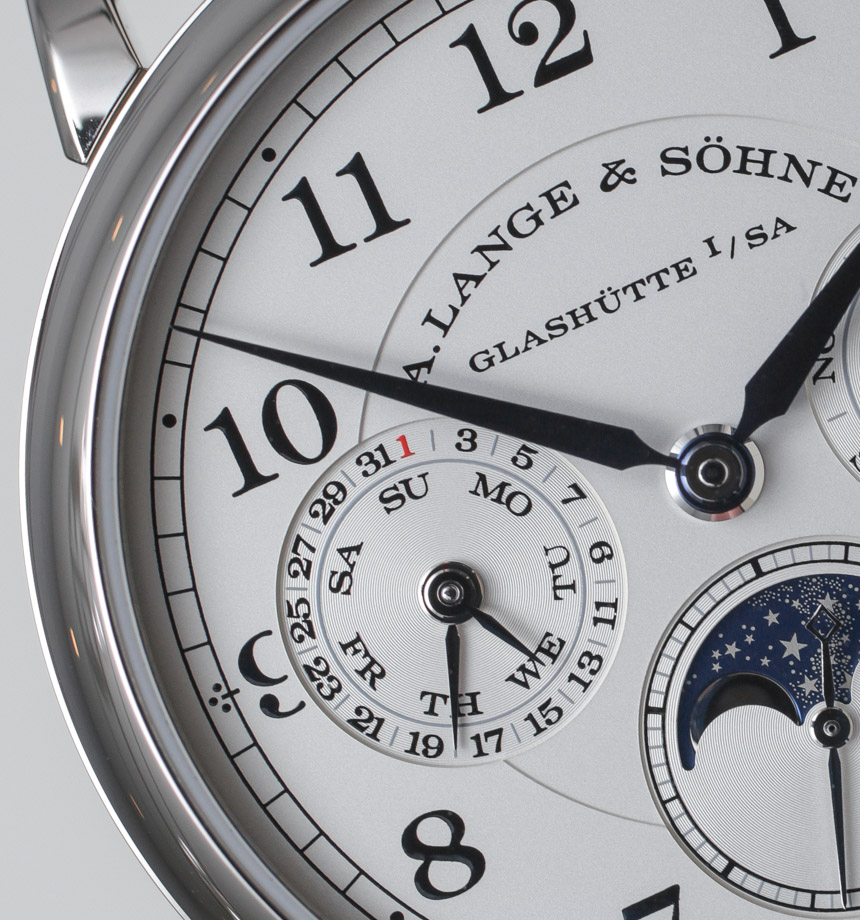
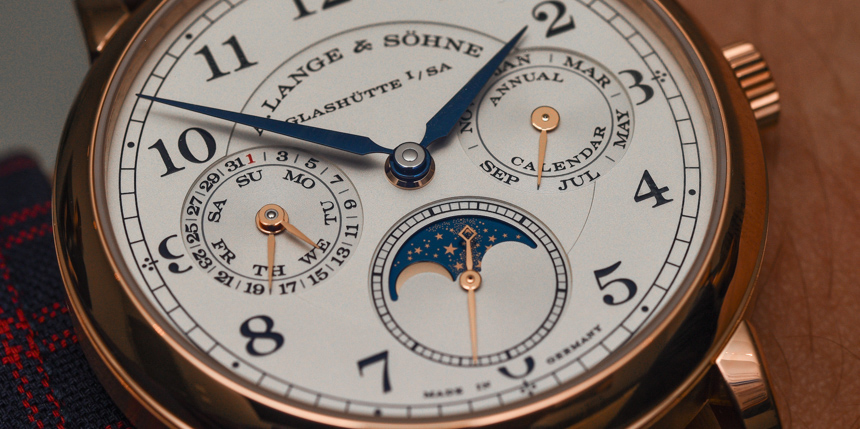
The 1815 collection is for the most part characterized by the style of hands and Arabic hour numerals on the dial. This is perhaps A. Lange & Söhne’s most classically conservative dial, and it delivers on the promise of looking both tasteful and timeless. Lange isn’t going for an “exciting look” because that is for the most part not what their watches are about. In a timepiece like the 1815 Annual Calendar, you are buying pure refined classicism of the best quality.
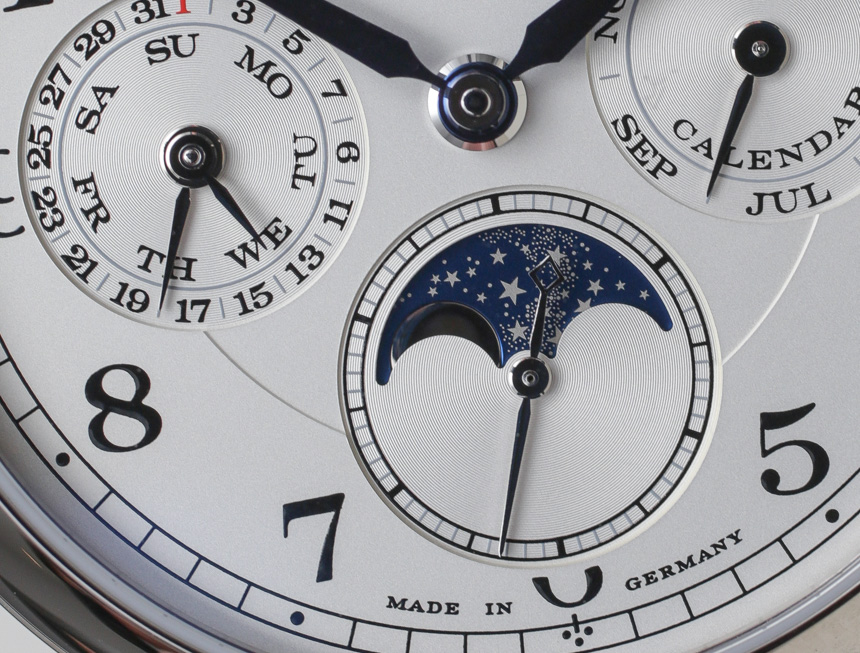
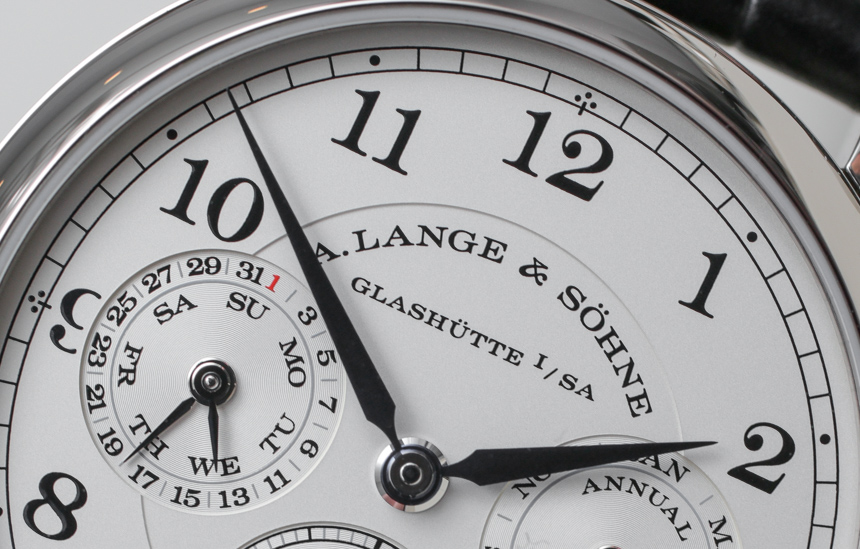
If you are in the market to drop about $40,000 on a classic timepiece, you’ll be pretty darn happy with the A. Lange & Söhne 1815 Annual Calendar given its mix of versatile wearability, comfort, aesthetics, and sheer utilitarian practicality. This isn’t the most beautiful or complex movement A. Lange & Söhne makes, but it does have all the lovely hallmarks of their hand-finished German Silver-based movements, which can be observed through the sapphire crystal caseback. More so, even at this arguably expensive price, the 1815 Annual Calendar represents a good value for the brand, whose watches don’t start at prices too much lower than this. With some fun tricks up its sleeves and timeless value, the A. Lange & Söhne 1815 Annual Calendar gives you reasons to save up for the retail price of €37,500. alange-soehne.com

